Future Challenge

Can sports provide a platform for individuals to challenge themselves and reach their full potential ?
**Summary:** This essay posits that sports provide a comprehensive platform for individuals to challenge themselves and reach their full potential. It explores how sports offer psychological benefits such as mental toughness, goal setting, and confidence building; physiological benefits including improved physical fitness, skill development, and resilience; and social benefits like teamwork, leadership, and camaraderie. Personal stories of overcoming adversity further underscore the transformative power of sports in personal growth. The conclusion affirms that sports are not just about physical activity but are a means to unlock human potential holistically.

Can flying cars become a reality in the near future ?
Flying cars have long been a staple of science fiction and futuristic visions, but can they become a reality in the near future? The answer is not straightforward, as it involves several complex factors. Here are some key points to consider: Technical Challenges: - Aerodynamics: Designing a vehicle that can efficiently take off, fly, and land requires careful consideration of aerodynamic principles. Balancing the weight of the vehicle while ensuring stability during flight is crucial. - Power Source: Finding an energy-efficient power source for sustained flight is essential. Advances in battery technology could potentially enable longer flight times. - Safety: Addressing potential crash risks and developing safety protocols is vital. Advanced navigation systems are needed to avoid mid-air collisions and ensure accurate landings. Regulatory Challenges: - Certification Standards: Meeting certification standards for airworthiness is a significant hurdle. Determining whether pilots are required or if autonomous systems can be used is also a challenge. - Airspace Management: Integrating flying cars into existing air traffic control systems poses challenges. Addressing privacy concerns related to surveillance and data collection is also important. Economic Challenges: - Cost of Production: The high costs of research and development may make flying cars initially expensive. Scaling production to make flying cars more affordable over time is also a challenge. - Market Demand: Assessing whether there is enough demand from consumers who are willing to pay for this new technology is important. Investing in infrastructure such as charging stations and landing pads to support widespread adoption is also necessary. Social and Environmental Impact: - Noise Pollution: Reducing noise pollution caused by flying cars to minimize disturbance to residents below is a challenge. - Environmental Impact: Ensuring that flying cars have a lower environmental impact than traditional vehicles is important. Promoting sustainable practices in the production and operation of flying cars is also crucial. In conclusion, while flying cars face numerous challenges on technical, regulatory, economic, social, and environmental fronts, advancements in technology and changing societal attitudes could make them a reality in the near future. However, it will likely require significant investments in research and development, as well as collaboration between governments, industries, and communities, to overcome these obstacles and bring flying cars to market successfully.

What is the impact of climate decisions on future generations ?
This text discusses the far-reaching impacts of climate decisions on future generations, including environmental issues such as rising sea levels and loss of biodiversity, economic shifts related to job markets and infrastructure costs, and societal effects like health concerns and political stability. It emphasizes the importance of taking immediate action to mitigate these impacts and create a sustainable future for all.

What challenges do urban planners face when designing future cities ?
Urban planners face numerous challenges in designing future cities, including rapid urbanization, environmental sustainability, social equity and inclusivity, and technology integration. Addressing these challenges requires careful planning, collaboration with stakeholders, and innovative solutions to create thriving, sustainable, and inclusive cities for all residents.

How does space exploration inspire future generations ?
Space exploration has been a source of inspiration for future generations in various ways, including igniting curiosity and wonder, advancing scientific knowledge, promoting international collaboration, encouraging careers in STEM, inspiring creativity and art, and nurturing resilience and perseverance. As we look toward the future, space exploration will continue to capture the imagination of young people around the world and spur them on to become the next generation of explorers, scientists, and engineers.

What is the future of e-sports and its integration with technology ?
E-sports, or electronic sports, have seen a meteoric rise in popularity over the past decade. As technology continues to evolve at a rapid pace, the future of e-sports looks brighter than ever before. In this article, we will explore the potential integration of e-sports with technology and what it means for the future of competitive gaming.

Can we trust climate models for future predictions ?
Climate models are designed to predict future changes in the Earth's climate based on scientific principles and past observations. Trust in these models depends on factors such as their scientific foundation, data quality, model complexity, intercomparison, historical validation, uncertainty quantification, and continuous improvement. While no model can perfectly predict the future, climate models offer valuable insights into potential future scenarios based on current knowledge and understanding. However, it is important to recognize their limitations and uncertainties when interpreting their results.

What challenges does the Clean Energy Revolution face in the future ?
The clean energy revolution is a global effort to transition from fossil fuels to renewable energy sources. This transition faces several challenges in the future, including technical, economic, social, and political factors. Some of these challenges include developing efficient and cost-effective energy storage solutions, upgrading existing grid infrastructure, high upfront costs for renewable energy infrastructure compared to traditional fossil fuel plants, job displacement in industries traditionally reliant on fossil fuels, raising public awareness about the benefits of clean energy, ensuring that clean energy benefits are distributed equitably across different socioeconomic groups and regions, consistent and long-term policy support, coordinated international efforts to tackle global climate change effectively, establishing stringent environmental standards and regulations, and proper planning and allocation of resources for infrastructure projects related to clean energy. Addressing these challenges will require concerted efforts from various stakeholders including governments, industry leaders, researchers, and the general public.

What is the future of carbon credit systems ?
The future of carbon credit systems is uncertain and depends on various factors such as policy decisions, technological advancements, public opinion, and market dynamics. Governments play a crucial role in shaping the future of these systems through regulations and enforcement. Technological innovations can both increase and decrease the value of carbon credits. Public opinion can drive demand for carbon credits, while market dynamics will shape the industry's evolution. Despite challenges, there are opportunities for growth and improvement in this important area of environmental protection.

How can wind energy contribute to a sustainable future ?
Wind energy is a renewable and sustainable source of power that can significantly contribute to a more sustainable future. It offers several benefits including reducing carbon emissions, stimulating economic growth, enhancing energy security, driving technological innovation, compatible land use, community engagement, scalability, improving health impacts, and promoting education and awareness. By incorporating wind energy into our energy mix, we can create a cleaner, healthier, and more sustainable environment for future generations.

What is the future outlook for private equity ?
Private equity (PE) is a dynamic sector of the financial industry that involves investing in or acquiring companies, typically with the aim of improving their operations and selling them at a profit within a few years. The future outlook for private equity is influenced by various factors such as economic conditions, technological advancements, regulatory changes, and market trends. Here's a detailed analysis of what the future might hold for private equity: Economic Influences: Global Economic Growth, Interest Rates, Market Volatility Technological Advancements: Digitization, Artificial Intelligence and Machine Learning, Blockchain Regulatory Changes: Stricter Regulations, Tax Laws Market Trends: ESG Investing, Diversification, Exit Strategies Industry Evolution: Consolidation, Secondary Markets, Direct Investments Challenges and Opportunities: Competition, Talent Retention, Innovation In conclusion, the future of private equity looks promising but not without its challenges. The industry is set to evolve with changing economic conditions, technological advancements, regulatory shifts, and market trends. PE firms that adapt and innovate will be well-positioned to thrive in this dynamic environment.

Can climate data analysis accurately predict future weather patterns ?
Climate data analysis, utilizing sophisticated climate models based on physical laws and accounting for complex interactions within the Earth system, plays a crucial role in predicting future weather patterns. These models allow scenario-based projections and ensemble forecasting to account for uncertainties. While they are continuously improved as new scientific understanding emerges, it's important to distinguish between weather forecasting (short-term events) and climate prediction (long-term trends). Climate prediction involves more variables, broader trends, external forcings, and wider confidence intervals compared to weather forecasting. However, climate models face uncertainties such as natural variability, model discrepancies, emission scenarios, feedback mechanisms, and regional differences. Despite these challenges, climate science has made progress in predicting aspects like global warming, sea level rise, extreme weather events, regional changes, and carbon cycle responses. In conclusion, climate data analysis can provide valuable insights into potential future climate patterns but comes with inherent uncertainties, especially in forecasting specific weather events far into the future. Ongoing advancements in climate science aid in developing informed policies and adaptation strategies.

How do TV show creators handle unexpected plot twists being leaked to the public ?
In the world of television, plot twists and surprises are often a key element to keep audiences engaged. However, when these unexpected turns get leaked to the public, it can pose a significant challenge for show creators. Here's how they typically handle such situations: - Identify the source of the leak. - Assess the impact. - Address the leak publicly if necessary. - Incorporate the leak into the show or change future storylines. - Stay silent in some cases. - Prevent future leaks by tightening security measures and ensuring confidentiality among cast and crew members.

How accurate are climate models in predicting future weather patterns ?
Climate models are complex mathematical representations designed to predict future weather patterns. The accuracy of these models is influenced by factors such as data quality, model complexity, and uncertainty in future emissions. Limitations include less accurate short-term predictions and uncertainty in model projections. Potential improvements include better data collection, advances in modeling techniques, and collaboration across disciplines.
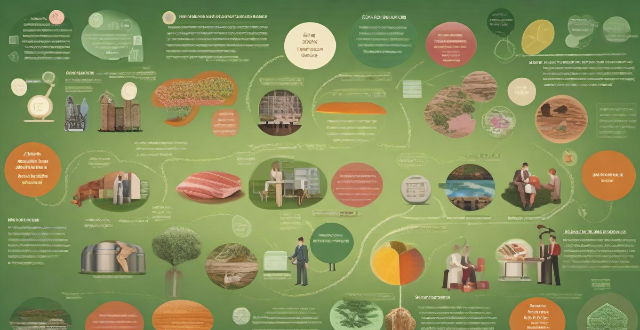
What policies can be implemented to reduce the number of climate refugees in the future ?
Policies to reduce the number of climate refugees in the future include investment in renewable energy, afforestation and reforestation, sustainable agriculture practices, coastal protection measures, and international cooperation and funding. These policies aim to mitigate the effects of climate change and prevent displacement of people due to climate change-related events.
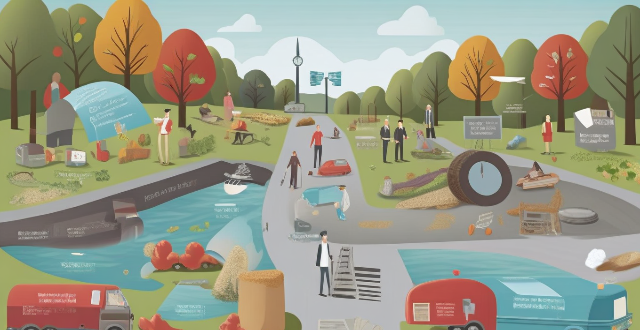
What are the implications of climate change negotiations for future generations ?
The implications of climate change negotiations for future generations are significant and multifaceted, affecting various aspects of life, including the environment, economy, society, and politics. Effective negotiations can lead to preserved natural ecosystems, mitigation of extreme weather events, job creation in renewable energy sector, reduction in energy costs, improved public health, enhanced quality of life, global cooperation, and leadership and innovation. These benefits highlight the importance of prioritizing the interests of future generations in climate change negotiations to ensure a sustainable and equitable world for all.

How does defaulting on a student loan affect future borrowing ?
Defaulting on a student loan can severely impact your financial future, including your ability to borrow money. Here's what happens when you default and how it affects future borrowing: 1. **Consequences of Defaulting**: When you fail to make payments on your student loan for an extended period (typically 270 days), it's declared in default. The loan servicer then takes measures like wage garnishment, tax refund offset, and charging collection fees. Your credit score also takes a significant hit. 2. **Impact on Future Borrowing**: - **Difficulty Obtaining New Loans**: Lenders see you as a high-risk borrower, making it hard to get mortgages, car loans, or personal loans. - **Higher Interest Rates**: Even if approved, you face higher interest rates due to your damaged credit score. - **Limited Borrowing Options**: You may only qualify for secured or co-signed loans. - **Trouble Renting Property**: Some landlords check credit scores, and a defaulted loan can hinder your rental applications. - **Impact on Employment Opportunities**: While less common, some employers might check your credit report, affecting job prospects in industries where financial responsibility is crucial. 3. **Recovering from Default**: - **Rehabilitation Programs**: Many lenders offer these to help you make affordable payments over time, removing the default status. - **Consolidation Loans**: You can consolidate your defaulted loan into a new Direct Consolidation Loan through the federal government, making it easier to manage your debt. However, this doesn't remove the default status from your credit report. - **Paying Off the Debt**: If possible, paying off the loan in full removes the default status and improves your borrowing prospects. Negotiating a settlement with your lender or seeking assistance from a nonprofit credit counseling agency are other options.

What are the main challenges faced by low-income countries in achieving sustainable development ?
Low-income countries face numerous challenges in achieving sustainable development, including poverty reduction, environmental protection, social inclusion, and institutional capacity. Addressing these challenges requires a comprehensive approach that involves collaboration between governments, civil society organizations, and international partners.

What are the implications of climate change for future generations ?
Climate change has significant implications for future generations, including rising sea levels, extreme weather events, food security, and health impacts. Rising sea levels can lead to flooding, displacement of communities, and loss of habitat for marine life. Extreme weather events can cause loss of life, destruction of infrastructure, and long-term changes in ecosystem structure and function. Climate change can also affect global food production, particularly in regions that are already vulnerable to food insecurity. Changes in temperature and precipitation patterns can affect crop yields, pest and disease outbreaks, and water availability for agriculture. Additionally, climate change can have significant impacts on human health, including increased risk of infectious diseases, respiratory illnesses, and mental health problems. The challenges presented by climate change require urgent action from individuals, governments, and organizations around the world to mitigate its effects and ensure a sustainable future for all.

What are the implications of climate change for future generations, specifically children ?
Climate change poses significant challenges and threats to future generations, particularly children. The implications of climate change for children are multifaceted and far-reaching, affecting their health, safety, education, and overall well-being. Health implications include increased respiratory problems, spread of infectious diseases, and nutritional deficiencies due to extreme weather events and changing precipitation patterns. Safety risks involve natural disasters and heat stress, while education is affected by disruption of learning and limited access to educational resources. Overall well-being implications include mental health issues, loss of cultural heritage, and economic impacts on families and communities. Addressing these challenges requires urgent action to mitigate the effects of climate change and adapt to its inevitable consequences, ensuring a healthier, safer, and more equitable future for all children.
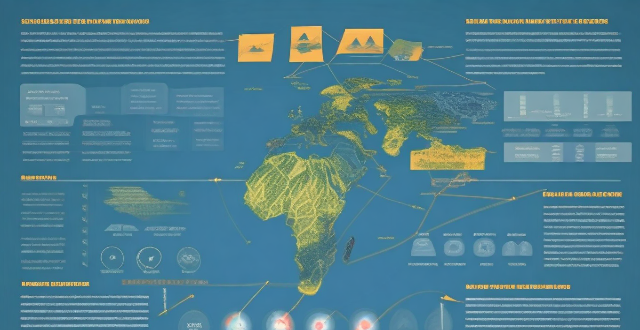
How does climate change influence the future of remote work and virtual employment ?
The article discusses the impact of climate change on the future of remote work and virtual employment. It states that rising temperatures, extreme weather events, and environmental concerns are driving factors for the shift towards remote work arrangements. As a result, there is an increasing demand for remote work options, technology advancements to support virtual employment, and a changing work culture that focuses on results rather than physical presence. The article concludes that embracing these changes can lead to a sustainable and efficient future of work.

What are the potential long-term consequences of climate change for future generations ?
The potential long-term consequences of climate change for future generations include environmental, social, and economic impacts. Environmentally, rising sea levels can cause coastal erosion and loss of island nations, while extreme weather events like hurricanes and wildfires become more frequent. Biodiversity loss is also a major concern, with species extinction and the spread of invasive species disrupting ecosystems. Socially, food security is threatened by changes in crop yields and water scarcity, while health risks increase due to heat-related illnesses and the spread of diseases. Displacement and migration may lead to conflict and instability. Economically, decreased productivity in agriculture and fisheries, increased adaptation and mitigation costs, and job losses contribute to economic instability. Addressing climate change requires global cooperation and significant investments in both adaptation and mitigation strategies to ensure a sustainable future.

How do you use historical data to make predictions about future stock market performance ?
Predicting the stock market's future performance is a complex task that involves analyzing various factors. One common method used by investors and analysts is to study historical data, which can help make informed predictions about future market performance. To use historical data for stock market predictions, it is essential to identify key metrics such as price movements, volume, earnings reports, and economic indicators. Once these metrics are identified, analyze the historical data to identify trends and patterns through technical analysis techniques like moving averages, support and resistance levels, and candlestick patterns. Additionally, consider using fundamental analysis to evaluate underlying factors that drive stock prices, such as financial statements, industry trends, and macroeconomic factors. With the advancement of technology, machine learning and AI models have become popular tools for predicting stock market performance, including neural networks, reinforcement learning, and deep learning. Combining different methods of analysis can lead to more accurate predictions about future stock market performance. However, it's important to remember that no method is foolproof, and there will always be an element of risk involved in investing in the stock market.

What measures are taken to protect and preserve heritage sites for future generations ?
Heritage sites are invaluable treasures that provide insight into the history, culture, and traditions of a community or civilization. It is essential to protect and preserve these sites for future generations to appreciate and learn from. Here are some measures taken to safeguard heritage sites: 1. Legislation and Policies 2. Conservation and Restoration 3. Community Involvement and Education 4. Research and Documentation 5. Security Measures 6. Sustainable Tourism Practices

What are the limitations of current climate models ?
This article discusses the limitations of current climate models, which are essential tools for predicting future climate conditions and understanding the impacts of human activities on the environment. The main limitations include uncertainty in model inputs, limited spatial resolution, simplified physics and processes, computational constraints, and challenges associated with model intercomparison projects. Addressing these challenges will be crucial for improving our ability to predict future climate conditions and assess potential impacts on ecosystems and human societies.
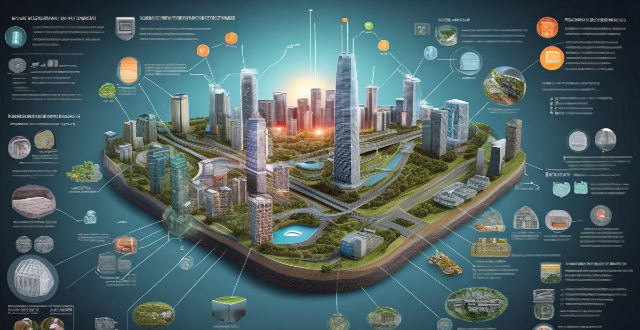
What is the future of nuclear energy in the energy market ?
The future of nuclear energy is promising, as it has advantages such as low carbon emissions, high energy density and baseload power. However, challenges like safety concerns, waste disposal, and high costs must be addressed. Increasing demand for clean energy, advances in technology, and integration with renewable sources can drive the growth of nuclear energy in the future.

What challenges do we face in achieving a continuous supply of sustainable energy ?
The challenges to achieving a continuous supply of sustainable energy include technological limitations, economic barriers, political and social factors, infrastructure and grid integration issues, and environmental impacts. Addressing these challenges requires collaboration between governments, businesses, and individuals to work towards a more sustainable future for our planet.
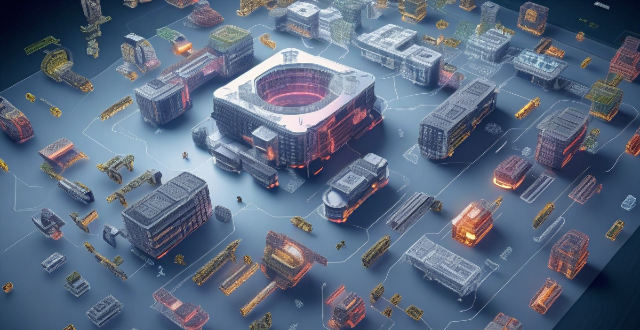
What is the role of robotics and artificial intelligence in future interstellar missions ?
The article discusses the role of robotics and artificial intelligence (AI) in future interstellar missions. The key areas where these technologies will make a difference include autonomous navigation and control, maintenance and repair, scientific research and data collection, and colony establishment and management. However, there are challenges to consider such as reliability, security, and ethical considerations. Overall, robotics and AI will play an integral role in overcoming the immense challenges of traveling to distant stars.
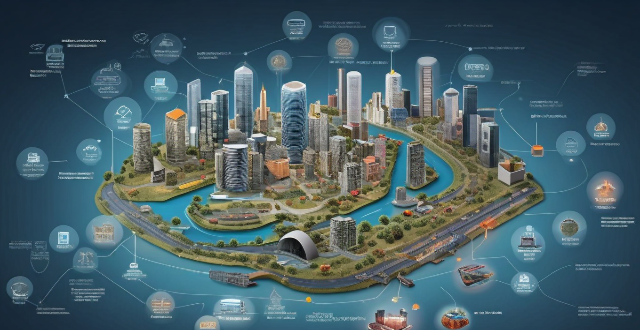
What is the future of Cross-Border Payment ?
The future of cross-border payment is expected to be influenced by trends such as digitalization, regulatory changes, innovation in payment methods, and global economic integration. However, challenges like high fees, security risks, and lack of standardization need to be addressed for the industry to become more accessible, secure, and efficient.

What are the challenges faced by the insurance industry in addressing climate change ?
The insurance industry faces several challenges in addressing climate change, including data-related issues, regulatory and legal concerns, and operational difficulties. These challenges can be broadly classified into three categories: data-related challenges, regulatory and legal challenges, and operational challenges. Data-related challenges include insufficient historical data and lack of standardization in collecting and analyzing climate-related data across the insurance industry. Regulatory and legal challenges involve lack of clarity in regulations governing how insurers should account for climate change in their risk assessments and pricing strategies, as well as liability concerns due to increased natural disasters and extreme weather events. Operational challenges include limited capacity to model climate risks, inadequate infrastructure for disaster response, and difficulty in pricing policies accurately. To overcome these challenges, insurers need to work together and invest in research and development to develop more sophisticated models and hire experts who can help them understand and manage climate risks effectively. They also need to continuously monitor climate trends and adjust their pricing strategies accordingly. By doing so, the insurance industry can play a vital role in managing the risks associated with climate change.